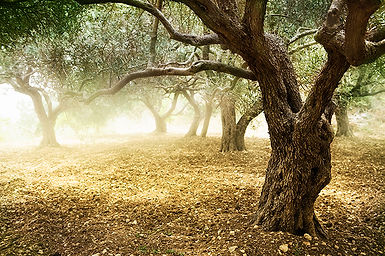
USDA HARDINESS ZONES
This system was developed by the United States Department of Agriculture and is used to help understand what plants will grow in certain locations and the typical duration of a plant's growing season with monthly average temperatures. There are 13 zones, 1 being the coldest (-51.1 to -48.3 degrees Celsius in northern and central Alaska) all the way to zone 13 (18.1 to 21.3 degrees Celsius in Puerto Rico. See our conversion page if you use Fahrenheit. Due to the variations, zones are divided into A and B. Unless stated a full zone is referred to.
What it doesn't say
These temperatures focus on the average lowest winter temperatures as plants sit outside, although poly tunnels and greenhouses provide micro climates to extend the food production season. Information not taken into consideration since its conception in the 1960's are humidity, wind or extreme weather, flooding and summer temperatures. Most of England would be zones 8A/B (-12.2 to -6.7 degrees C) and 9A (-6.7 to -3.9 degrees C), with exceptions of some areas such as the peak district and other high places. Flash in the peak district is much higher than many other places and receives more snow and colder lows, where just miles away lower down those places are having rain and be warmer, therefore they are 2 separate zones due to the micro climates.
Some issues can be that zones 8A/B for England also include some areas of central/eastern Spain and western Turkey, which both have higher and summer temperatures and more sun year round, meaning a longer growing season for the warmer areas. Another comparison within the uSDA data range would be zones 1-4 are in Alaska as well as Montana, which is much further south. Montana has summer peak temperatures close to 40 degrees Celsius, where as Alaska summer heat peaks between 15 - 27 degrees.
USDA map
For up to date zone information the United States Department of Agriculture site: https://planthardiness.ars.usda.gov/pages/map-downloads
The zones are updated periodically, with the 2012 map being collated by data between 1976 - 2005. Due to the more rapid changes in environments hopefully a new one will be be available sooner than 33 years time.
USDA zone map

Created by Agricultural Research Service ARS and Oregon Sate University OSU 2012. Visit the link above or the Oregon State University site for a downloadable map.
USDA zones across the world (generalised)
Zone 6
-23.3 to -17.8 degrees C
Alps, Austria, Canada, central Iceland, Czech Republic, Hungary, Macedonia, Poland, Romania, Slovakia, western and southern inland Scandinavia.
Examples of plants that grow well in zone 6 are apple trees, beans (cold varieties), cornflowers, dahlias, kale, lettuce, potatoes, pumpkins, radishes, sage, spinach and squashes.
Undercover - chilies, cucumbers, peppers and tomatoes.

Zone 7
-17.8 to -12.2 degrees C
Andora, coastal Iceland, Scandinavia, Estonia, Denmark, east and southern Germany, eastern Europe, northen Greece, Peak district (UK), Scottish highlands, Spanish mountains
Examples of plants that grow well in zone 7 are the above plants and beetroot, broccoli, nasturtiums, peas, parsnips, rocket.
Undercover - aubergines, chilies, cucumbers, peppers and tomatoes.

Zone 8
-12.2 to -6.7 degrees C
Belgium, England, eastern Spain, France, Holland, Ireland, Luxembourg, mountainous Adriatic coast, Northern Ireland, Scotland, Southern Argentina and Chile, Wales
Plants that grow well in zone 8 are from the above categories, figs, pears, radicchio, salad leaves, spring greens, sunflowers, sweetcorn and tomatoes.
Undercover: Asparagus, aubergines, melons, olives

Zone 9
-6.7 to -1.1 degrees C
Southern Argentina and Chilie, China (with exceptions), Greece (northern areas), Japan, Italy, Mountainous areas of southern Africa, North Africa (inland), Portugal, Turkey, Western Spain
Some plants from zones 6 - 8 may struggle in zone 9 summer conditions depending how dry it is. Plants such as apple and pear trees need a lot of water. Plants that grow well in zone 8 are from the above categories, asparagus, grapes, melons,
Undercover: Aubergines, banana trees, olives.

Zone 10
-1.1 to 4.4 degrees C
Argentina, Australia (cooler areas), Canary Islands (high areas), China, England (south coast, Scilly Isles and Isle of Wight), Irish west coast, Madeira, Mediterranean including islands and north African coast, Mexico, New Zealand, Portuguese Altantic coast, Southern Africa, Tazmania
Some plants from zones 6 - 9 may struggle in zone 9 summer conditions depending how dry it is. Plants such as apple and pear trees need a lot of water. Plants that grow well in zone 8 are from the above categories, aubergines, bananas, watermelon, olives.


